Bridgerton on Amazon: A Deep Dive into Its Impact
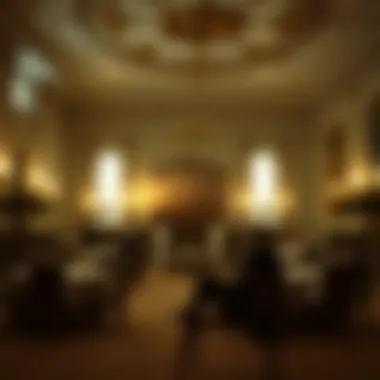
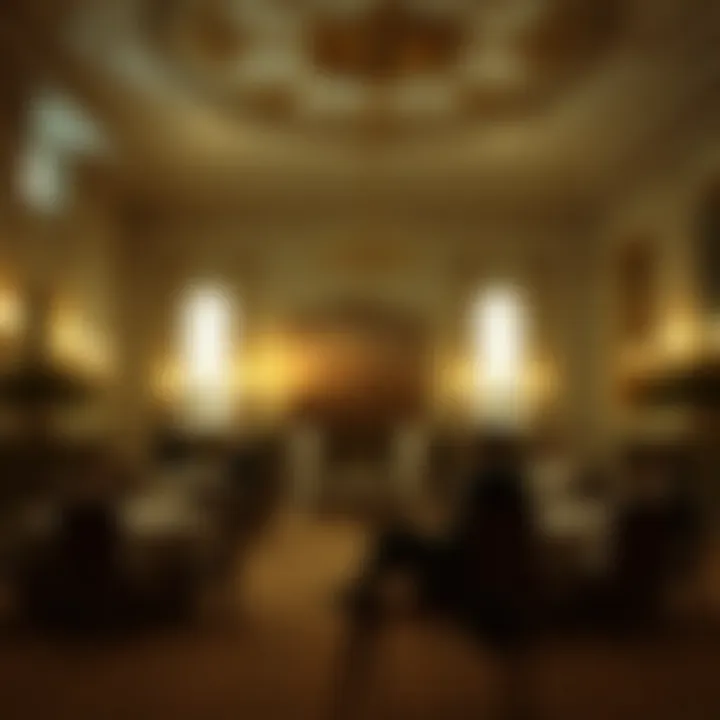
Intro
In recent years, a particular show has caught the attention of viewers across the globe, bringing with it not just romance but a lush, vibrant world of intrigue and societal norms. Set against the backdrop of Regency England, this series harkens back to a time where social standing dictated relationships but with a fresh twist that resonates with modern audiences. Spearheaded by the visionary mind of Shonda Rhimes, known for her knack for compelling storytelling, the show encapsulates love, rivalry, and societal expectations in a unique blend that hints at both nostalgia and innovation.
The narrative is based on the novels penned by Julia Quinn, which are rich with colorful characters embroiled in affairs of the heart. The show offers a kaleidoscope of experiences, portraying not only the trials of romance but also the constraints imposed by gender and class.
As we delve deeper into this captivating saga, let’s first grasp a holistic understanding of what makes this production a revolutionary piece in the realm of television.
Overview of the Entertainment, TV Show, or Film discussed
Background Information
The series launched on Amazon Prime Video in December 2020, quickly palming its place within the streaming giants amidst a sea of content. With a robust fanbase, its influence has been palpable, fostering discussions that extend beyond the screen. Audiences face challenges and triumphs alongside characters who experience passion and heartbreak, all while navigating the rigid structures of society.
Brief Synopsis of the Plot
At the heart of the show lies Daphne Bridgerton, a young woman yearning to find love in a world that prioritizes titles and lineage. The promise of marriage hangs in the air, thick with tension, as she becomes ensnared in a faux courtship with Duke Simon Basset, a man with a troubled past. Their dance of attraction unfolds against a backdrop of scandal and gossip, encapsulated by the mysterious Lady Whistledown’s society papers, which serve as both villain and ally.
Key Details about the Creators, Directors, and Actors
As previously mentioned, Shonda Rhimes stands as the driving force behind the series, ensuring that the adaptation maintains a contemporary voice while honoring its source material. Director Julie Anne Robinson's deft handling of various themes brings an intimate touch to the exploration of class and desire. The starring duo, Phoebe Dynevor and Regé-Jean Page, bestows the screen with an electrifying chemistry, leaving viewers both enthralled and longing for more.
The supporting cast is equally impressive, with standout performances from characters such as Lady Danbury, portrayed by Adjoa Andoh, and the elder Bridgerton siblings, bringing layers of depth and complexity to the narrative.
Analysis and Critique
An evaluation of the series reveals a masterful blend of direction, performance, and writing. The dialogue crackles with wit, and the cinematography, characterized by vibrant colors and lush settings, captivates the audience's gaze, whisking them away to an era of glamour and grit. Themes of societal expectations, along with the exploration of individuality, serve as a canvas for character development that feels organic yet carefully constructed.
Comparison to Similar Works
In comparison to other adaptations of historical literature, such as Pride and Prejudice, Bridgerton embraces a more modern sensibility. Where previous adaptations often played it close to the chest regarding societal constraints, the dialogue here feels far more relatable, bridging the gap between the past and today.
Identification of Themes
Key themes drive the narrative forward, reflecting issues of class, scandal, and the pursuit of happiness against all odds. The series importantly addresses the nuanced struggles of women in a patriarchal society, all while indulging in the themes of rebellion and the quest for self-identity.
Episode/Scene Breakdown
A closer look at a few notable scenes reveals much about character arcs and the direction of the story. For instance, the garden scene where Daphne and Simon first acknowledge their growing attraction is pivotal, showcasing not just romantic tension but also their individual vulnerabilities. Similarly, the annual Bridgerton ball serves as a microcosm of societal expectations, illustrating how love often dances around the periphery of propriety.
Highlighting Key Moments
Moments of conflict escalate the stakes, culminating in confrontations that not only push characters toward personal growth but also heighten audience engagement. These key scenes contribute to a larger narrative arc, effectively driving the plot while developing complex relationships.
Audience Reception and Ratings
Critical and audience responses have largely skewed positive, with many praising its fresh take on historical romance. Viewer ratings on platforms such as Rotten Tomatoes currently sit well above average, indicating a strong consensus that the series delivers on both narrative satisfaction and cinematographic appeal. Engagement on social media platforms like Twitter and Reddit also reflects a thriving community discussing character journeys and theories about future episodes.
Recommendations and Culmination
For fans of period dramas and those with a penchant for romance laced with societal critique, this series shines brightly. Viewers who appreciate a blend of humor, heart, and historical context will find much to enjoy here. Looking ahead, the significance of Bridgerton lies not only in its storytelling but also in paving the way for more diverse adaptations of literary classics.
Ultimately, this exploration reveals how Bridgerton intricately weaves a tapestry of connections that resonate with contemporary audiences while honoring the past. The storytelling redefines genre norms, creating a space where character depth and visual splendor collide in a manner that feels both innovative and deeply rooted.
Preface to Bridgerton
In exploring Bridgerton, the Netflix original series, it becomes evident how much this modern adaptation intertwines with historical narratives. This program, set against a regency-era backdrop, offers not just a feast for the eyes but also a treasure trove of cultural commentary. By diving into its many layers, we grasp its significance within the entertainment sphere today. The series taps into timeless themes of love, class, and societal expectations. Understanding the series provides a deeper comprehension of not just the characters, but the broader implications it carries within today’s context.
Overview of the Series
Bridgerton introduces audiences to the lives of the Bridgerton family, navigating the delicate dance of romance and societal expectations in early 19th century London. The lush visuals and strong character arcs paint a vibrant picture that captivates viewers. The intricate plot spins from debutantes making their societal debut to the behind-the-scenes machinations of the formidable Lady Whistledown, who pens a scandalous newsletter that serves as both a gossip engine and a critical analysis of high society.
The Source Material
Julia Quinn's Novels
At the heart of Bridgerton lies the beloved series of novels by Julia Quinn. These books have carved out a niche for themselves by blending humor, relatability, and romance in a way that reflects truth and nuance in character portrayal. Quinn's exploration of complex relationships amidst rigorous social norms adds layers to the narrative that few other romance novels accomplish. The characters are not just caricatures; they possess depth, flaws, and the potential for growth. Their journeys resonate with a wide audience, making these novels a solid base for adaptation.
One standout aspect of Quinn's work is her knack for creating strong, female protagonists who have agency in their stories. This level of empowerment aligns well with modern values, making it a popular choice for today’s audiences. Upfront and candid, Quinn's characters navigate their world with a blend of vulnerability and strength, making her books particularly appealing.
Adaptation Challenges
Transforming a beloved book series into a television format is no small feat. One major challenge that arises during this transposition is maintaining the essence of the original work while providing new dimensions for the screen. Additionally, the pacing becomes critical; a series often has to condense rich narratives into concise episodes without losing depth.
Significant changes might occur in how characters are portrayed or how subplots are developed, which can sometimes cause ripples among die-hard fans of the novels. The show must balance honoring the source material with creative interpretations that engage a broader audience. This dynamic presents both advantages and disadvantages, where fresh narratives can breathe new life into established tales, yet risk alienating purists who cherish the original storytelling style.
Understanding these intricacies not only enhances appreciation for the series but also invites contemplation about the very nature of adaptation in modern media.
"A faithful adaptation is like walking a tightrope; it demands precision, balance, and an understanding of both the original material and its new format."
As we journey through the phenomenal world of Bridgerton, it’s essential to acknowledge the building blocks that comprise its foundation—the novels and their intricate narratives—and how they translate to the screen, setting precedence for future adaptations.
Narrative Structure
Narrative structure serves as the blueprint of any story. In the context of Bridgerton, it not only finds its way to grab viewer's attention but also enriches the storytelling experience. The careful arrangement of plot points and character development creates a rhythmic flow that builds suspense and anticipation. Understanding how Bridgerton utilizes these elements can provide insight into why the series resonates with so many viewers.
Plot Dynamics
Key Themes
Key themes in Bridgerton such as love, societal constraints, and personal growth play a crucial role in weaving the narrative together. They capture the essence of the era while making it relatable to today's audience. The theme of love, in particular, runs like a thread through each season, binding the stories of the characters together.
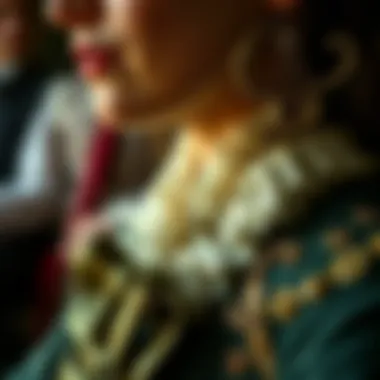
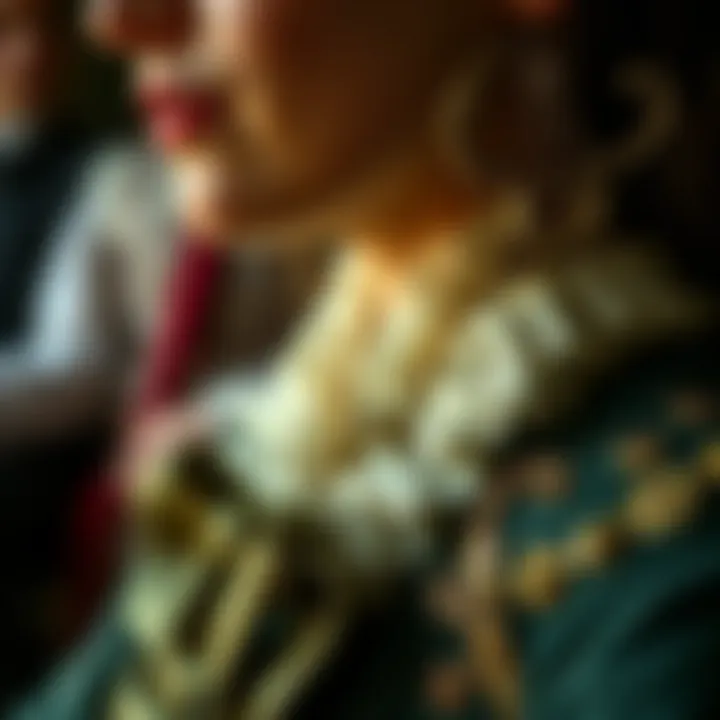
Moreover, the series encapsulates the struggles of navigating romance within the rigid confines of Regency-era society, which resonates deeply with modern viewers. This contrasting interplay creates an engaging storyline that isn’t merely about pleasant courtship but instead challenges societal norms.
A standout feature of these themes is their ability to evoke genuine emotions, making the audience feel deeply connected to the characters’ journeys. While some might argue that they can come across as predictable at times, the execution in Bridgerton is what sets it apart. The interplay between ambition and fear invites the audience to ponder their own aspirations and obstacles in love.
Character Arcs
Character arcs in Bridgerton are not just about who changes, but how those changes interact with the world around them. Take Daphne Bridgerton's evolution as an example; her transition from a sheltered young woman to someone who asserts her independence against societal expectations is striking. Character development in this series is rich and layered, sustaining viewer interest through the ups and downs.
Each character's journey is crafted with meticulous detail, showcasing their internal and external conflicts. They face choices that reflect both their desires and societal expectations, making their arcs feel grounded and real. While some characters may be viewed as archetypes, the writing breathes life into their narratives, allowing viewers to experience all the twists and turns they face. The complexity of these arcs invites the audience to engage deeply, creating emotional ties that make the narrative compelling.
Storytelling Techniques
Flashbacks
Flashbacks are a storytelling device that Bridgerton employs skillfully. They provide essential context and backstory, allowing viewers to understand why characters act a certain way. For example, Simon Basset's past - fraught with emotional turmoil - is gradually revealed through these flashbacks, adding depth to his character and motivations.
This technique enriches the narrative, giving insight into pivotal moments that shaped the characters. They might disrupt the flow of the main plot momentarily, but when used effectively, flashbacks can enhance the emotional stakes. Critics sometimes contend that overusing flashbacks could lessen immediate tension, but in Bridgerton, they are utilized sparingly yet meaningfully to complement the ongoing narrative.
Narrative Pacing
Pacing is crucial in Bridgerton, particularly given its rich source material and lavish historical setting. The series oscillates between high-tension scenes and quieter, reflective moments, which helps maintain viewer interest. The way events unfold at just the right tempo allows viewers to digest character complexities and overarching themes without feeling rushed.
Slow-burn romance scenes, for instance, are balanced with moments of conflict and intrigue. This creates a crescendo of drama that pulls the audience along, culminating in satisfying climaxes while also allowing room for character development. This method encourages anticipation and builds emotional investment.
However, there is a fine line to walk. If the pacing is too slow, it risks losing viewers' attention; too fast, and the emotional weight may be skimmed over. Bridgerton finds this balance effectively, showcasing how strategic pacing can elevate a narrative and maintain viewer engagement.
Character Development
Character development serves as the backbone of any compelling narrative, and Bridgerton is no exception. The series breathes life into its characters, making each backstory and motivation resonate deeply with its audience. Viewers connect not just with the protagonists but also with those inhabiting the supporting cast. This development is crucial, as it adds layers, making the plot ahead seem more realistic and enticing.
Characters on Bridgerton embody traits and complexities that reflect the struggles, desires, and societal pressures of their time, offering viewers an engaging look into the Regency era while integrating modern sensibilities. Namely, the journey of each character leads to deeper themes about love, duty, and personal ambition, which further enhances the series' appeal.
Character arcs are employed thoughtfully to illustrate growth, contradictions, and emotional depth. Not every character conforms to traditional roles, presenting nuances that challenge standard portrayals in historical dramas. Therefore, Bridgerton manages to strike a balance between its source material and a contemporary lens, inviting deep discussion and exploration from its audience.
Protagonists and Antagonists
Daphne Bridgerton
Daphne Bridgerton stands as a powerful symbol of the series' exploration of Regency-era expectations versus personal desires. Her character embodies the ideal of a young woman on the cusp of societal debut, navigating societal expectations and personal ambitions. One of her key characteristics is her naivety paired with determination, which paints a relatable figure amidst the opulence of London high society. Her choices in love and family reveal her strength and vulnerability, reflecting the complexities of a woman's role in that era.
What sets Daphne apart is her evolution throughout the series. From a young woman eager to find love, she matures into a more fierce and independent individual. This transformation attracts viewers, engaging them with her journey, which simultaneously critiques societal norms regarding marriage and fidelity. However, Daphne's initial portrayal can sometimes skew towards traditionalism, invoking criticism about whether her character challenges norms or inadvertently reinforces them.
Simon Basset
Simon Basset, the Duke of Hastings, encapsulates the traditional tortured hero archetype, enriching the narrative through his struggles with identity and trauma. His character's motivation, primarily driven by a tumultuous past, resonates with audiences seeking depth in male protagonists. A notable aspect of Simon's character is his conflict over familial expectations, which forms the crux of his relationship with Daphne. This conflict makes Simon a compelling character, as viewers witness both his charm and the burdens he carries.
Simon's journey of opening up emotionally offers a drastic narrative shift, contrasting elegantly with Daphne's growth. His struggle also invites broader discussions about masculinity, vulnerability, and the hidden pains that many characters grapple with silently. By embodying these themes, Simon proves to be a popular choice for Bridgerton, pushing the boundaries of audience expectations for male leads in period dramas.
Supporting Cast
The Featherington Family
The Featherington family serves as a pivotal foil to the Bridgertons, enhancing the exploration of class and societal expectations layered within the plot. Specifically, their financial struggles amidst attempts to climb the social ladder inject both humor and drama into the narrative. The family’s contrasting values with the Bridgertons raise discussions about ambition and moral complexity.
One key feature about the Featheringtons is their over-the-top nature, often portraying exaggerated versions of societal aspirations. This presentation is beneficial as it highlights the absurdities of 19th-century societal pressures, making social commentary accessible to viewers. Yet, their portrayal could be seen as reinforcing stereotypes of wealth and privilege, creating a reoccurring motif by which viewer perceptions can be critiqued.
Lady Danbury
Lady Danbury stands out as a formidable force within the narrative, embodying wisdom and authority while defying many societal norms of the Regency period. Her key characteristic is her unapologetic and direct manner, which provides a breath of fresh air in contrast to the more restrained mannerisms of other characters. As a matriarch, she acts as a mentor to younger characters while also highlighting issues of race and class that were often overlooked in period dramas.
Lady Danbury's influence on the narrative is significant. She challenges the status quo and displays a riveting complexity that invites deeper character study. However, this duality could pose a risk, as viewers might expect her to fulfill every stereotype associated with older characters, potentially limiting her depth. Nevertheless, her role elevates the narrative, providing insights into the multi-faceted nature of both personal relationships and societal dynamics in that era.
Cultural Impact
Examining the cultural impact of Bridgerton reveals how it shakes hands with contemporary society while tipping its hat to historical roots. This piece serves as a rich tapestry of how a modern adaptation can shape perceptions about class divisions, relationships, and identity. The show's approach to these matters tells us not just about the Regency era but also reflects our current moment, fostering discussions on representation and societal norms.
Representation in Casting
Diversity in Characters
Bridgerton diverges from traditional casting choices, stepping into the spotlight with diverse characters that bring a fresh narrative. By presenting a racially diverse cast, it provides a fuller picture of society, moving beyond the typical portrayal of the past as a monochromatic world. This commitment not only resonates with viewers from various backgrounds but fosters a sense of inclusivity, elevating the overall enjoyment of the story.
A key characteristic of this diversity lies in its boldness. The choice to cast actors of different ethnicities in roles commonly assumed to be strictly white allows Bridgerton to challenge expectations. The benefit is twofold: the story feels modern while inviting discussions about historical accuracy in the representation of race. This isn’t just a marketing gimmick; it’s a narrative strategy that grants authenticity and depth to the storytelling.
However, with this choice can come backlash. Some might argue about historical inaccuracies or feel that the focus on diversity overshadows character development. Yet, such discussions are crucial, as they shine a light on societal perceptions and expectations surrounding historical authenticity and representation in media.
Historical Accuracy versus Modern Narratives
When tackling the theme of historical accuracy versus modern narratives, Bridgerton walks a fine line. While it draws inspiration from the historical novels by Julia Quinn, the series is not shackled by the need to remain wholly true to the Regency period. This flexibility allows the show to weave in social commentary relevant to today's audiences, showcasing how past storytelling can align with present-day themes.
The blend of modern storytelling within a historical framework serves a significant purpose; it invites viewers to examine how outdated norms persist into today’s society. This approach provides a richer context within which to explore themes of gender and class without being bogged down by rigid historical constraints. By showcasing characters in a more modern light, the series allows for critical discussions on these still prevalent issues, making it a beneficial choice for both entertainment and reflection.
Yet, this very idea can lead to a clamor around accuracy and integrity of storytelling. Some purists might dismiss the show for its liberties, arguing that it dilutes the real experiences of those living in the 1800s. Nevertheless, such debates push audiences to navigate the intricate dance between appreciating a good story and acknowledging the flow of historical truths.
Societal Reflections
Romance and Gender Roles
In Bridgerton, the exploration of romance and gender roles plays a central role. The series doesn't shy away from showcasing the complexities of relationships amidst societal expectations. This infusion of romantic tension acts as a mirror reflecting the evolving conversations around love, partnerships, and women's autonomy in contemporary society.
A striking aspect of this representation is how the show juxtaposes characters bound by societal rules with those who strive for personal independence. This blend offers viewers an engaging portrayal of romance that feels pertinent even today; capturing the struggles both historical and modern women face while searching for love while adhering to or rejecting societal mandates.
The conflict between duty and desire resonates, giving depth to characters and keeping viewers engrossed. However, the line can blur: some may perceive this portrayal as merely romanticizing harsh realities of the past. This creates room for critical discussions about the role of women in history versus modern interpretations of women's choices.
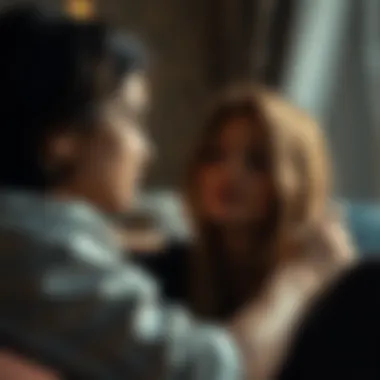
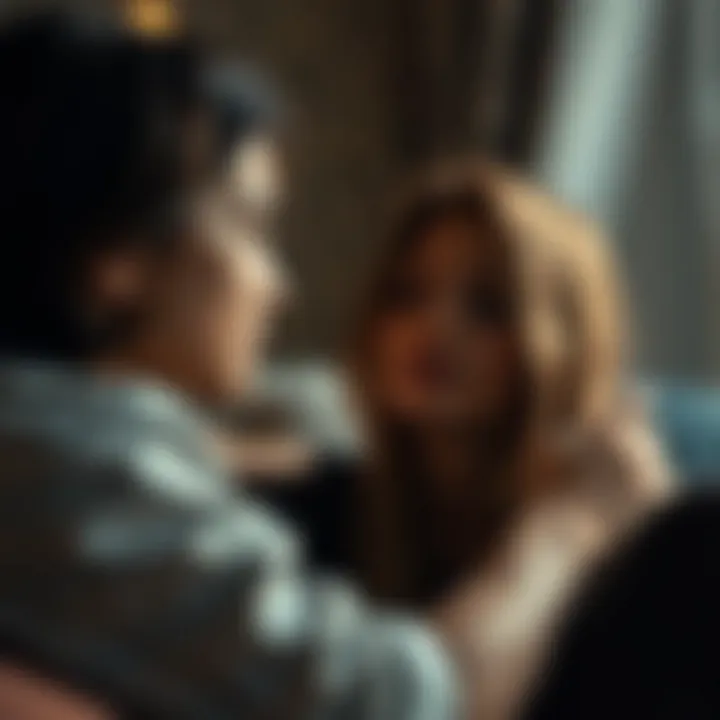
Wealth and Class Dynamics
In a world of opulence, Bridgerton unveils the intricate dance of wealth and class dynamics, emphasizing how these forces dictate power and relationships. The series illuminates the contrasts between the affluent Bridgertons and the struggling Featheringtons, shedding light on how wealth influences not only personal choices but also societal standing.
This portrayal encourages viewers to reflect on their understandings of privilege and class in their current context. While portraying grand ballrooms and lavish soirées, the show also illustrates the nuanced struggles that come with managing wealth and status. It opens discussions on what it means to belong in a class-driven society—an ever-relevant discourse.
Although the glamorous setting might seem a world apart from everyday life, the underlying themes highlight issues of inequality and aspiration, making Bridgerton more relatable on a human level. Still, the challenge remains about whether it might romanticize an elitist lifestyle, drawing criticism and nuanced discussions about the glamorization of wealth in media.
"Bridgerton invites us to reflect on the complexities of our own societal structures while indulging in a visual feast of romance and fashion."
The cultural impact of Bridgerton is not merely about its entertainment value; it invites a deeper examination of representation, gender roles, and class, ultimately prompting audiences to engage with the past while considering today's narratives.
Production Aspects
Production choices are pivotal in any television series, and Bridgerton is no exception. The show’s production aspects encompass not only technical details but also creative visions that weave together to form the narrative's fabric. These elements play a significant role in immersing the audience into the lavish world of Regency-era England. High-quality production design contributes to how effectively the story is told; a period piece needs to feel genuine, and that authenticity is achieved through strategic production decisions.
In this segment, we will explore the intricacies of set design, cinematography, costume design, and how each of them serves the broader goals of storytelling.
Set Design and Cinematography
Visual Aesthetics
Visual aesthetics in Bridgerton bolster the sumptuousness of the series. The use of vibrant colors and sprawling sets creates an inviting yet opulent atmosphere. Each location, whether a lavish ballroom or a quaint garden, tells a part of its own story. The designers have cleverly juxtaposed the ornate elements typical of Regency architecture with modern sensibilities, which makes it immediately appealing.
One standout feature of this approach is the careful attention to lighting. Soft pastels combined with dramatic shadows help in creating moods that resonate with the romantic undertones of the storyline:
- Emphasis on intimate moments, especially during romantic encounters.
- Broader lighting in social settings signifies the contrast between public and private lives.
However, a balance is essential. Overly bright scenes can strip depth from crucial narratives, potentially detracting from the series’ emotional weight.
Location Choices
The show’s choice of filming locations makes it feel genuinely rooted in its time. Many scenes were shot in actual historic estates and gardens scattered across the UK, such as the stunning Wilton House and the jewel-like Castle Howard. This decision to film in real historical settings rather than constructed sets enhances authenticity.
One notable aspect is the diversity of locations, which contributes to a rich visual tapestry:
- Different settings symbolize class and status among characters, a central theme in the series.
- Some locations, like the pastel-painted buildings of Bath, create a whimsical feel, contrasting with the more stern, opulent settings of high society.
Yet, the reliance on these specific locales does pose challenges. For instance, restrictions related to filming logistics and accessibility can sometimes curtail creative freedom.
Costume Design
Period Accuracy
Costume design in Bridgerton stands as a testament to the commitment to period accuracy while also making bold choices that make sense narratively. Costumes are painstakingly crafted to reflect the social standings of characters, offering visual cues about their personalities and backgrounds.
The meticulous attention to detail is a defining characteristic, with each piece reflecting both historical context and character arcs. For example, Daphne's gowns evolve as her story develops, showcasing her journey from innocence to empowerment.
This accuracy appeals to viewers who appreciate authenticity, but it can also lead to criticisms regarding the modern interpretations of period fashion. Audiences often appreciate the blend of tradition and contemporary elements, as it breathes fresh life into historical storylines.
Fashion as a Narrative Tool
In Bridgerton, fashion goes beyond mere aesthetics; it serves as a narrative tool. Costumes often signal underlying plot dynamics and character developments. For instance, bold colors and intricate designs may represent a character’s confidence or status, while simpler attires can signify modesty or vulnerability.
This characteristic of fashion in the series highlights the contrasting lives of characters at different social strata:
- Regular use of muted tones for the Featherington family contrasts with the Bridgerton siblings’ vibrant wardrobes, enhancing their social standings.
- Symbolic accessory choices, like jewelry and hairstyles, can indicate various themes, such as love, loss, or aspiration.
Still, navigating the representation of such symbolic fashion can be a double-edged sword. If not handled with care, these aesthetic choices could easily overshadow character depth.
Overall, the production aspects of Bridgerton effectively meld visual storytelling with emotional narratives, enhancing viewer engagement. By focusing on distinct visual styles and their deeper meanings, the show manages to capture an audience that appreciates both history and modern storytelling.
Soundtrack and Music
The soundtrack and music in any series can be the unsung heroes of storytelling. In Bridgerton, this aspect plays a pivotal role in enhancing the viewer's experience. The relationship between the music and the narrative transcends mere background sound; it is intricately woven into the fabric of the show's emotional landscape and key moments. From lively ball scenes to intimate moments, the carefully curated score adds layers to the visuals, amplifying engagement and connection.
Musical Score
Composer Insights
At the helm of Bridgerton’s musical score is Kris Bowers, known for his work in various genres and ability to blend styles. His background in both classical and contemporary music offers a fresh take on the traditional regency sound. His score is not just a collection of notes; it’s a reflection of the characters’ emotions and journeys.
One key characteristic of Bowers’ composition is the fusion of classical orchestration with modern elements. This creates an auditory experience that feels both timeless and exciting. It appeals to a broad audience, making the series accessible to both classical music lovers and younger viewers who might not otherwise engage with a historical setting.
The unique feature of Bowers’ work lies in how it draws on the emotions of the scenes. For instance, heavy string arrangements punctuate pivotal moments, creating a sense of urgency or despair. This can either elevate a scene to new heights or, at times, become overwhelming if it overshadows dialogue. Nonetheless, the thoughtful integration of music complements the narrative beautifully.
Emotional Resonance
Emotional resonance is a hallmark of Bridgerton, a thread that ties the visuals and story together. The score elevates the scenes to craft an emotional experience that allows the audience to connect with the characters on a deeper level. A listener might feel a swell of joy during a dance scene or a pang of sadness during a farewell, illustrating the power music holds.
This aspect also proves to be a beneficial choice for the series as it enriches storytelling. Summary scenes are often enhanced by crescendos that cue emotional changes and help viewers navigate complex feelings. The ability of the score to evoke such potent feelings is a distinct advantage, making the viewing experience resonant and memorable.
Modern Covers of Classics
Cultural Fusion
An intriguing feature of Bridgerton’s soundtrack is its use of modern covers of classic pop songs. This tactic merges contemporary culture with a traditional setting, promoting a sense of cultural fusion. This unique approach allows the younger audience to connect with the show, effectively bridging generational gaps.
The characteristic of employing well-known modern songs sung in classical styles can be both a novelty and a grounding element. For instance, songs from Billie Eilish and Ariana Grande are transformed into string quartets, adding a layer of sophistication while maintaining their original charm. However, this might not sit well with some purists who feel such interpretations stray too far from the original work.
This unique blend serves to reinvigorate the soundtrack, maintaining a fresh yet familiar vibe throughout the series. It's a strategy that lays out Bridgerton’s ambition to redefine norms, making the historical drama feel alive and vibrant.
Impact on Audience Reception
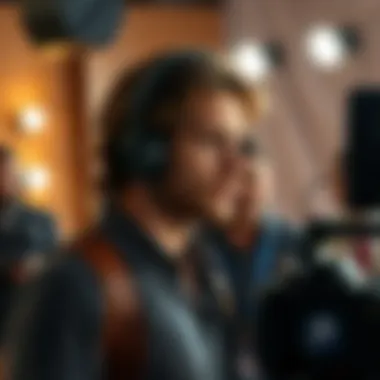
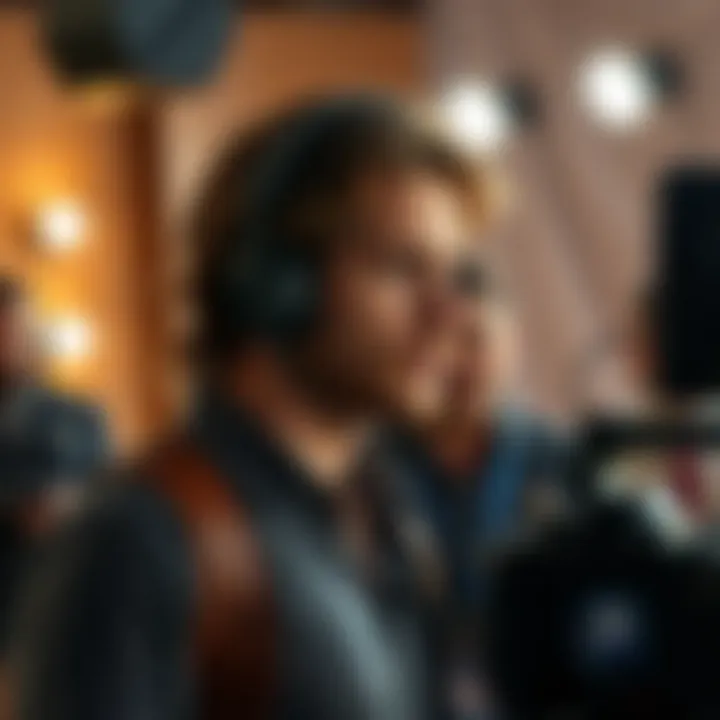
The impact of the soundtrack on audience reception is significant. Viewers often delve into discussions online about their favorite songs and how they fit into specific scenes. This not only enhances engagement but also fosters a community around the series, creating a shared appreciation for the creative choices made by the showrunners.
One key element of this strategy is how it influences audience emotions. The modern covers elicit memories and associations that can resonate with personal experiences, promoting a deeper connection to the series. However, it’s a double-edged sword; while it appeals to many, it may alienate traditionalists who prefer strict adherence to period music. This clever musical choice illustrates the balancing act between historical accuracy and contemporary relevance.
"Music speaks what cannot be expressed, soothes the mind and gives it rest, heals the heart and makes it whole" This reflects how melody intertwines with the narrative of Bridgerton and shapes its pivotal moments.
Overall, the soundtrack and music of Bridgerton not only complement its narrative but redefine how historical and contemporary elements can harmonize, leaving an indelible mark on viewers that beckons them to return to their favorite regency romantic escapades.
Viewership and Reception
Understanding the viewership and reception of Bridgerton is essential for grasping its positioning within the modern television landscape. This series has sparked widespread conversation since its debut, not just for its storytelling but also for how it resonates across various audience groups. Insights into viewership provide valuable perspective on the evolving preferences of viewers and the cultural contexts that shape these preferences. Furthermore, the response from critics and audiences alike offers a rich tapestry of feedback that can underscore the series' impact, both immediate and potential longevity.
Audience Demographics
Age Groups
When we look at the age groups that engage with Bridgerton, it becomes clear that the show captivates a varied audience, from young adults in their twenties to mature viewers well into their forties and beyond. One hallmark of the younger demographics is their inclination towards binge-watching. They often find themselves drawn in by the romantic intrigue and compelling cliffhangers, leading to rapid viewership—"once you pop, you can't stop," so to speak.
The older viewers, meanwhile, might appreciate the historical aesthetics and the grounded narratives that invoke nostalgia for a different time. This dual appeal makes Bridgerton a noteworthy case study in effective storytelling. However, the breadth of ages can be a double-edged sword; while on one hand, it opens the door to a wider fanbase, there can be challenges in crafting stories that resonate as deeply across such diverse age frames.
Cultural Backgrounds
Diverse cultural backgrounds play a significant role in shaping the audience experience of Bridgerton. The show is able to engage viewers from various ethnicities, traditions, and values, which enriches the viewing experience. The multicultural casting not only reflects a shift from monolithic representations in period dramas but also invites deeper discussions around identity and belonging.
A standout feature of Bridgerton is how it reflects contemporary issues through diverse characters in a regency setting. This fusion allows various audience members to see parts of themselves within the storytelling. However, while this broadened spectrum of cultural representation is seen as progressive, it can also lead to mixed critiques from viewers and commentators who might feel that such adaptations distort historical accuracy. Striking the right balance between representation and authenticity continues to be a significant conversation point.
Critical Reception
Reviews and Ratings
Critical reception of Bridgerton has been a mixed bag but primarily leans towards the favorable side. Critics have pointed out its lush visuals and engaging narrative arcs as strong selling points. Many platforms, like Rotten Tomatoes and IMDb, reflect high ratings that resonate well with narrative enthusiasts and casual viewers alike. The vibrant aesthetics combined with its bold character choices have led to a remarkable debut that stands out in a crowded genre.
However, not every review has been stellar. Some critiques focus on perceived inconsistencies in plot or character development, which can leave segments of the audience feeling underserved. This interplay between acclaim and criticism creates a vibrant discourse around how audiences interact with modern adaptations of classic themes.
Awards and Nominations
Lastly, the Bridgerton series has racked up an impressive list of nominations and awards, showcasing its industry recognition. The accolades received point towards not just approval from audiences but also validation from industry peers. The series was nominated for multiple awards, including several Emmys and Golden Globes, establishing itself as a strong competitor within the category of historical drama adaptations.
Such recognition can serve multiple purposes—validating the creative team’s hard work and serving as marketing leverage to draw in new viewers. Yet, amidst this success, there are voices that argue awards can sometimes reflect industry trends more than the quality of the narrative itself.
In sum, the viewership and reception of Bridgerton tell a layered story of cultural engagement, audience diversity, and industry acclaim. These elements combined illustrate not only what Bridgerton has achieved but also foreshadow its path forward in television history.
Future of Bridgerton
The future of Bridgerton holds enormous potential, as it moves beyond its initial seasons and into unexplored territory. This section will dive into the prospects of upcoming seasons and possible spin-offs, along with their implications for the series as a whole. Understanding what lies ahead offers insight into how Bridgerton continues to shape the landscape of period drama on television while engaging a wider audience.
Upcoming Seasons
Plot Expectations
As fans eagerly anticipate the next installments, there’s certainly much buzz around plot expectations. The series thrives on weaving elaborate stories from Julia Quinn’s novels, but it also demonstrates a knack for creativity in originl storylines.
A key characteristic of plot expectations lies in the blending of romance, drama, and societal commentary. This blend is a popular choice because it keeps viewers hooked while enhancing character arcs. For instance, the ongoing tension between societal norms and personal desires provides fertile ground for both humor and heartbreak.
One unique feature of future plot expectations involves the promise of fresh conflicts that challenge established characters. This adds depth and allure to the narrative, though it can also pose risks. Deviating too far from beloved storylines might alienate long-time fans, which is a disadvantage when balancing growth with loyalty to source material.
Character Developments
The evolution of character developments is critical to maintaining viewer interest in upcoming seasons. As the narrative expands, characters not only evolve but are also faced with new dilemmas, allowing for rich storytelling possibilities.
A salient feature of character development is how it mirrors the societal issues of the time, creating a relatable connection for modern audiences. This makes it a beneficial approach for the article, as it fosters a deeper understanding of character motivations and reactions.
However, presenting increasingly complex characters can showcase weaknesses. Characters could become too multifaceted, leading to confusion among viewers regarding true intentions. Balancing depth without losing their core traits is an ongoing challenge in Bridgerton.
Spin-offs and Expansions
New Perspectives
Spin-offs focusing on secondary characters bring new perspectives that have potential to enrich the Bridgerton universe. Exploring these characters’ lives allows for expansive storytelling beyond the core plot, bringing forth unique narratives and themes. This robust approach helps broaden the appeal, making it a worthwhile consideration for the article.
A key aspect of introducing spin-offs is that they can tap into underrepresented storylines, allowing other voices to be heard. This strategy appeals to a diverse audience and keeps the content from becoming stale. Yet, there’s always the risk of diluting the main storyline. Too many side plots might confuse or overwhelm the original theme of the series.
Potential Adaptations
Delving into new adaptations based on characters or plotlines not yet explored can offer avenues for significant engagement. By considering characters who were secondary in the original, the series can attract renewed interest from viewers who yearn for untold stories.
The benefit of potential adaptations lies in their capacity to dive into different genres, such as mystery or comedy. Incorporating different styles can keep the content fresh. Nonetheless, there’s a risk that veering too far from the original tone could alienate the established fan base, leading to mixed reactions.
Closure
The conclusion of this article serves not just as a wrap-up, but as a significant point of reflection on the impact and legacy of Bridgerton. Unlike the typical summative blurbs often seen, this section aims to crystallize the essence of all that has been discussed throughout the article. It is essential to underscore how this series has made strides not just in entertainment, but in cultural dialogues surrounding class, race, and gender representation.
From elaborate set designs that invoke a sense of nostalgia, to its diverse casting that challenges historical inaccuracies, Bridgerton does more than entertain; it provokes thought and discussion. Fans of the show are drawn to it not simply for its romance or its lush visuals, but because it dares to challenge norms. As we dissect its components, we see layers intertwined: the melodic soundtracks marry the vibrant visuals, character arcs unfold with complexities that resonate with modern audiences, and the stories carve pathways for future productions.
Indeed, the article's focus on the cultural significance and nuanced narrative structure of the show highlights its importance in the current landscape of television. In a time where traditional storytelling seems at risk of fading away, Bridgerton revitalizes that form and presents it anew to both audiences well-versed in regency-era lore and those unfamiliar with its tropes.
Legacy of Bridgerton
The legacy of Bridgerton can be seen manifesting in various forms. First and foremost, it establishes a new standard for period dramas, incorporating a blurred line between historical authenticity and creative license. Its success has opened up opportunities for various productions to explore genres and narratives that challenge the norms of mainstream portrayals of history. The rise of diverse narratives—as evidenced by nontraditional casting choices—validates the importance of representation in media, showcasing that stories can be told from different angles without losing their essence or integrity.
Additionally, the show serves as a case study in how modern adaptations can breathe fresh life into familiar tales. The popularity of Julia Quinn's novels blossomed into a significant rise in interest for historical romance, thus aiding in the resurgence of similar themes in contemporary literature and television. Audiences are eager for more, which has prompted networks to rethink their own content strategies.
Broader Implications for the Genre
The implications of Bridgerton stretch well beyond its immediate success. It prompts a broader reflection on how genres evolve in reception and production. By intertwining modern societal norms with classic storytelling, it invites the audience to engage with the narrative on a deeper level. Themes of wealth disparity, romantic entanglements influenced by status, and the compelling necessity for self-discovery push the boundaries of what period drama can achieve.
Moreover, with its foothold in the streaming era, it reshapes how networks strategize their program offerings. As subscription-based platforms dominate viewership, content now needs to resonate not just in its story, but in its unique delivery. Bridgerton offers a tactile example of how to create buzz and conversation not just around its release date, but in crafting a series ethos that lasts well beyond the screen. It emphasizes the importance of target demographics, while also ensuring that storytelling remains strong and relatable.
In essence, all of these factors underscore the cultural and narrative significance of Bridgerton. By examining both its immediate impacts and its broader implications, we can better understand how this series has set the stage not just for itself, but for the genre as a whole. As we look ahead, the future is bright for adaptations that are bold enough to intertwine the classical with the contemporary.







